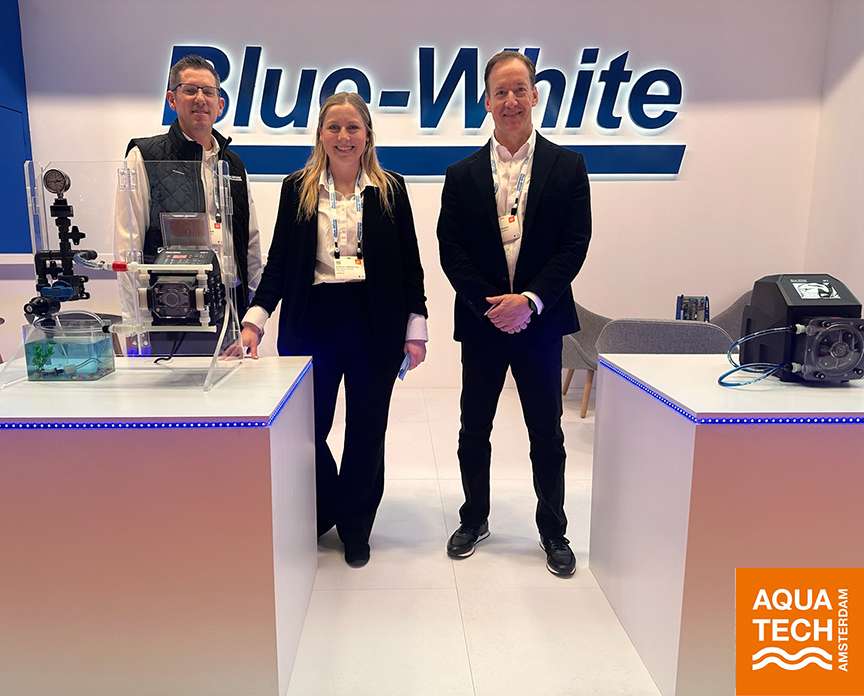
Visit BW® at Aquatech Amsterdam for Expert Chemical Dosing Solutions
Team Blue-White® is at Aquatech Amsterdam and ready to discuss the Best
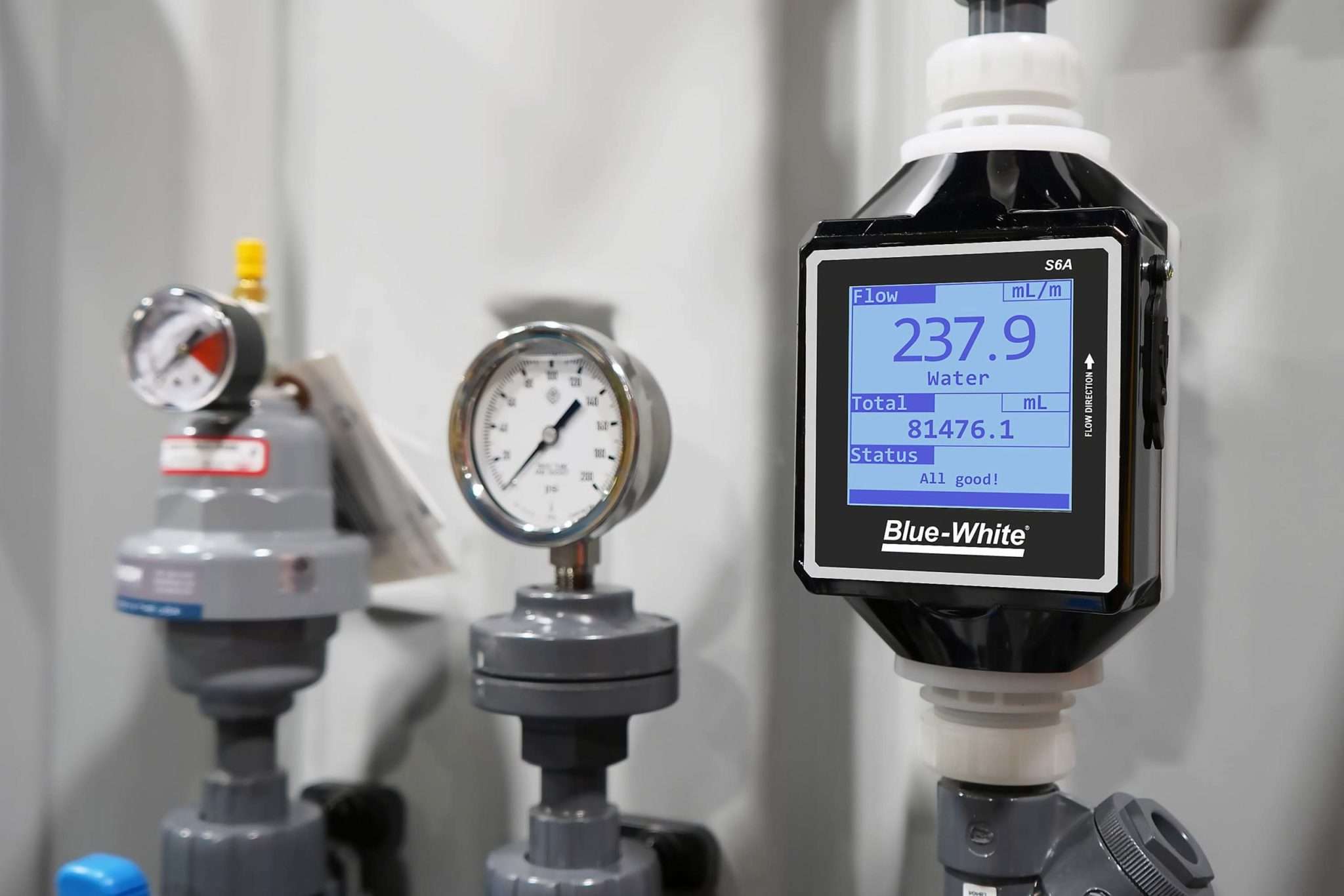
Flow meters are an important component in water treatment systems. Operators rely on the accuracy of a flow meter’s readings, particularly for chemical dosing and other low-flow processes. Accuracy in metering depends on a range of factors, from the types and quality of liquid being metered to the meters themselves. Generally, the two most accurate meter technologies are static meters (i.e., those without moving parts), which includes ultrasonic and magnetic flow meters (mag meters). Both have their advantages, but the right fit will depend on the application. This makes it important to understand the pros and cons of each technology before making a purchase.
Ultrasonic meters detect and measure flow using sound waves, and Ultrasonic meters work in one of two ways. Doppler ultrasonic meters send out a signal and measure the change in frequency as it bounces back to determine the flow rate. To do this often requires bubbles, particles or a high concentration of solids that will reflect the sound wave back. By comparison, transit-time ultrasonic meters send two signals, one upstream and one downstream. The difference between them is proportional to the velocity of the liquid. However, bubbles and large solids will cause inaccurate readings.
Mag meters create a magnetic field and measure the voltage of any conductive material passing through the field. The major downside to this technology is that it requires liquids with specific properties or impurities. Mag meters work well with water with some natural mineral content (such as most drinking water), as well as acids and caustic liquids.
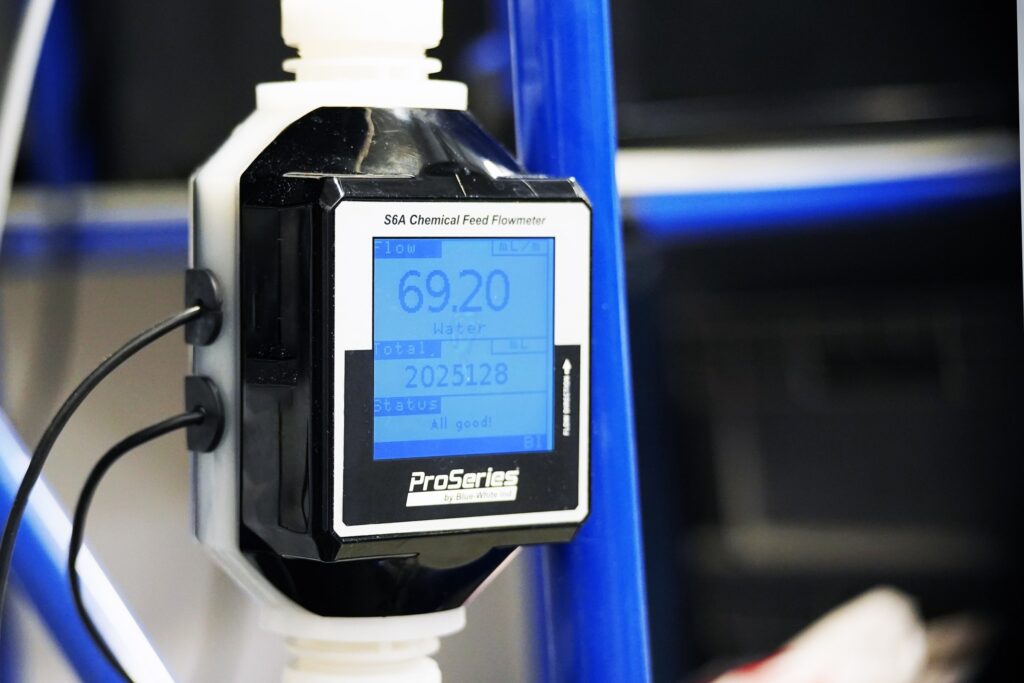
Accuracy. Both types of flow meters, ultrasonic meters and mag meters, have comparable accuracy under ideal conditions. The exact level of accuracy will depend heavily on the manufacturer and the application.
Impact of air bubbles. As mentioned, air bubbles can either aid or hinder a meter, depending on the technology. Mag meters, for example, will read air bubbles as flow and may read high if there is too much air in the fluid. Doppler ultrasonics actually rely on air bubbles for their reading, so the opposite is true in that the absence of air can cause inaccuracies.
For transit-time ultrasonics, air bubbles can be problematic, but there are solutions, such as including a strainer that mitigates the bubbles and installing the meter vertically rather than horizontally. This also works with substances like sodium hypochlorite, which can off-gas and cause similar problems in meter accuracy to air bubbles in general.
Impact of temperature. Both types of meters are impacted by fluid temperature. The conductivity of a fluid changes with temperature, which can cause inaccuracy for mag meters, particularly at low flow rates. Similarly, ultrasonic signals will travel faster in warmer fluid than colder fluid. Thankfully, some meters have temperature sensors and built-in algorithms that allow them to compensate for temperature changes.
Installation process. Mag meters require an invasive installation, which involves welding them in-line. Ultrasonics are often welded in place as well. Clamp-on ultrasonic meters are less invasive and easier to install, although they tend to be less accurate since the pipe itself dampens the signal.
Minimum flow range. The lowest possible detectable flow rate will depend less on the technology and more on the manufacturer and the intended application. For example, meters for administered chemicals need to have very low flow ranges. Some, such as those offered by Blue-White Industries (Figure 1), can detect as low as 10mL/min. This is ideal for municipal and industrial water treatment when operators need to be as precise as possible to avoid overdosing with a given additive.
Type of liquid. Although it has been discussed a bit already, the type of liquid and its properties matter when selecting a meter. For example, mag meters will not work well with hydrocarbons, distilled water, and non-conductive solutions, as these liquids have little or no electrical charge. Ultrasonic meters will not work with a liquid that dampens sound, which includes some polymers and dense slurries.
Cost. Mag meters tend to be more expensive than ultrasonic meters, although exact prices vary depending on the manufacturer, pipe size, application, and more.
Unique features/innovations. As with flow range, specific features will vary from product to product and manufacturer to manufacturer. Features like the above-mentioned strainer to reduce bubbles and temperature compensation algorithms are only available in some models, such as those offered by Blue- White Industries. Water treatment professionals should be sure to ask vendors about innovations that may be advantageous to the intended application before making a decision.
Written by:
Blue-White® Industries
714-893-8529

Team Blue-White® is at Aquatech Amsterdam and ready to discuss the Best
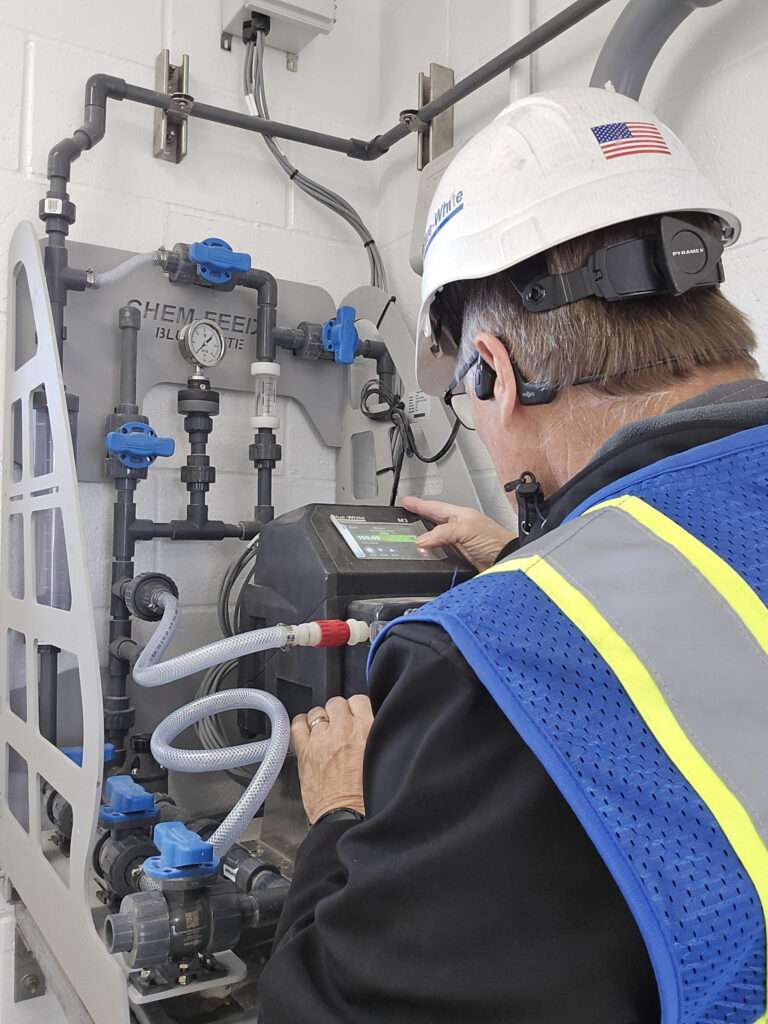
BW®’s Rich Hopkins just completed startup of this wall mount skid, equipped with Blue-White®’s
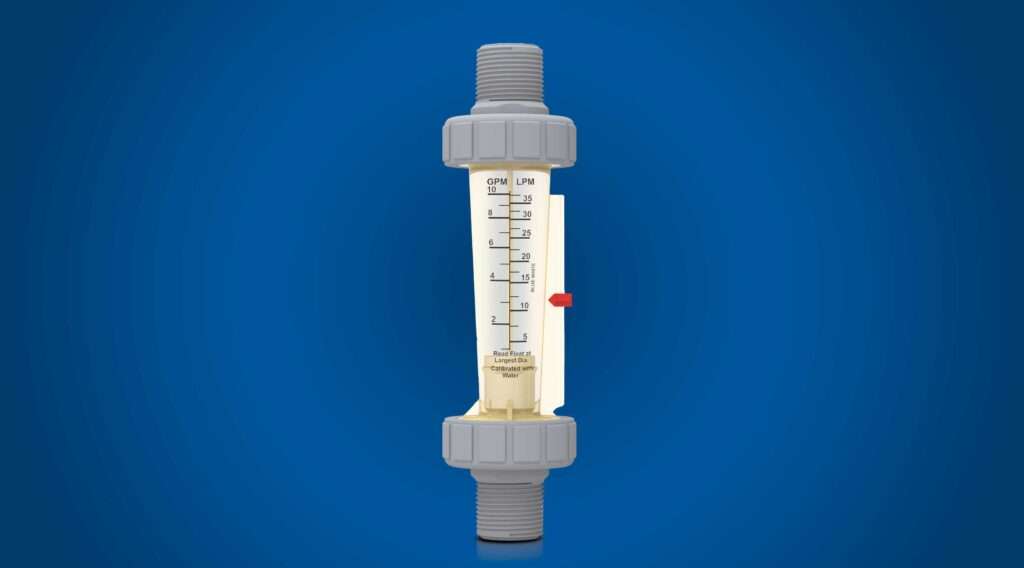
There are many industrial and municipal applications where accurately measuring fluid flow
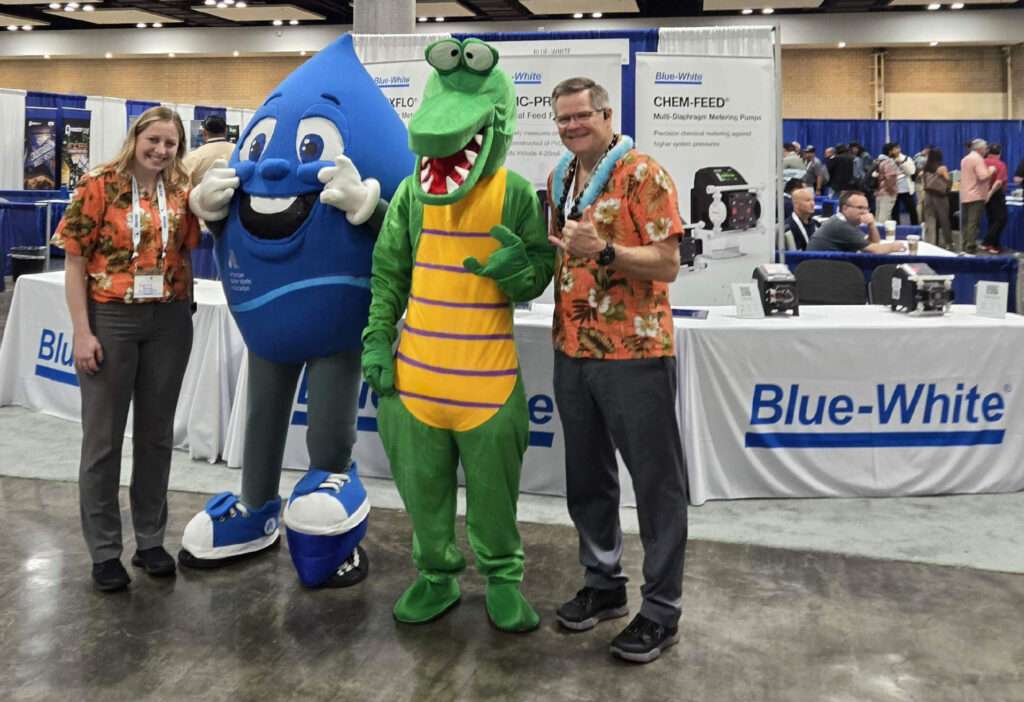
It was a busy few days in Honolulu for the Pacific Water
Copyright © 2024 Blue-White
| Cookie | Duration | Description |
|---|---|---|
| cookielawinfo-checkbox-advertisement | 1 year | Set by the GDPR Cookie Consent plugin, this cookie is used to record the user consent for the cookies in the "Advertisement" category . |
| cookielawinfo-checkbox-analytics | 11 months | This cookie is set by GDPR Cookie Consent plugin. The cookie is used to store the user consent for the cookies in the category "Analytics". |
| cookielawinfo-checkbox-necessary | 11 months | This cookie is set by GDPR Cookie Consent plugin. The cookies is used to store the user consent for the cookies in the category "Necessary". |
| CookieLawInfoConsent | 1 year | Records the default button state of the corresponding category & the status of CCPA. It works only in coordination with the primary cookie. |
| elementor | never | This cookie is used by the website. It allows the website owner to implement or change the website's content in real-time. |
| viewed_cookie_policy | 11 months | The cookie is set by the GDPR Cookie Consent plugin and is used to store whether or not user has consented to the use of cookies. It does not store any personal data. |
| Cookie | Duration | Description |
|---|---|---|
| _ga | 2 years | The _ga cookie, installed by Google Analytics, calculates visitor, session and campaign data and also keeps track of site usage for the site's analytics report. The cookie stores information anonymously and assigns a randomly generated number to recognize unique visitors. |
| _gat_gtag_UA_85334924_1 | 1 minute | Set by Google to distinguish users. |
| _gid | 1 day | Installed by Google Analytics, _gid cookie stores information on how visitors use a website, while also creating an analytics report of the website's performance. Some of the data that are collected include the number of visitors, their source, and the pages they visit anonymously. |
| CONSENT | 2 years | YouTube sets this cookie via embedded youtube-videos and registers anonymous statistical data. |
| Cookie | Duration | Description |
|---|---|---|
| VISITOR_INFO1_LIVE | 5 months 27 days | A cookie set by YouTube to measure bandwidth that determines whether the user gets the new or old player interface. |
| YSC | session | YSC cookie is set by Youtube and is used to track the views of embedded videos on Youtube pages. |
| yt-remote-connected-devices | never | YouTube sets this cookie to store the video preferences of the user using embedded YouTube video. |
| yt-remote-device-id | never | YouTube sets this cookie to store the video preferences of the user using embedded YouTube video. |
Please fill out the form to request a quote.
A sales rep will reach out to you.
| Image | Catalog Number | Description | Price | Buy |
|---|